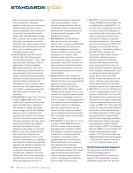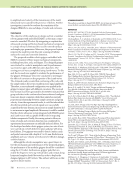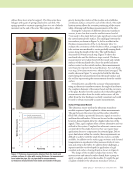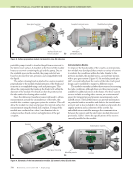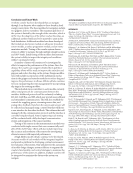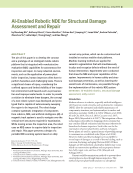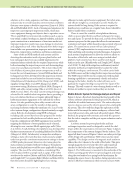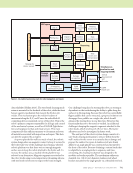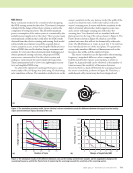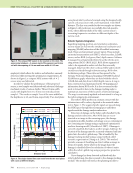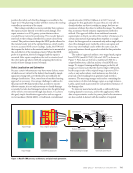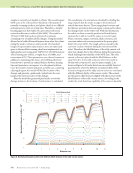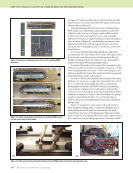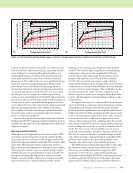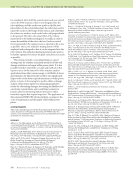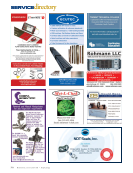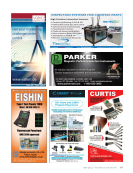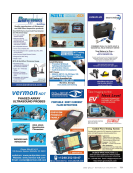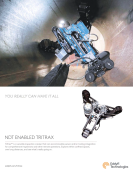J U L Y 2 0 2 1 • M A T E R I A L S E V A L U A T I O N 747 not influenced by the liftoff distance in the range of 0 to 5 mm. A crack-depth prediction algorithm based on the kernel- based Gaussian process regression (GPR) is performed to estimate the depth of the cracks obtained at different liftoff distances ranging from 0 to 5 mm. There are 50 crack signals obtained at each depth of the cracks. Thirty-five crack signals are randomly selected from the 50 crack signals in each depth of the cracks to form a training dataset. The GPR model is expressed as: (1) where l(x) ~ GP(0,k[x,x´]), b(x) Rp, and l(xi) is the latent variable. The Matern 5/2 kernel is used as the covariance function of the Gaussian process: (2) where i is the number of the dataset, sl is the characteristic length scale, sf is the signal standard deviation, and r = √(xi – xj)T(xi – xj). The trained GPR predicts the values of the depths in the testing dataset, which consists of the rest of the 15 crack signals of the 50 crack signals in each depth of the cracks. Figure 9 shows the estimated depth of a crack obtained from the testing sets using the trained GPR model. Meanwhile, the true depth of the crack is also shown in Figure 9 for compar- ison. The mean absolute error and the root mean square error are as low as 0.0018 mm and 0.002 mm, respectively. The result shows that the developed GPR model can estimate crack depth with a low estimation error and a high degree of prediction accuracy and stability. Friction Stir Welding Technology FSW is a solid-state technology with no melting of materials involved in the process. Compared to the fusion repair tech- nique, the relatively low heat input associated with this solid- state repair technique can generate a much narrower heat-affected zone (HAZ) with less sensitization and a rela- tively low residual stress in the stir zone (SZ) and HAZ (Lienert et al. 2003). Meanwhile, FSW introduces large plastic deformation to activate significant dynamic recrystal- lization in the SZ (Ma 2008). The grain refinement in the SZ and a low residual stress lead to enhanced mechanical proper- ties of FSW repairs and potentially improved corrosion performance compared to the base metal. For the FSW process, peak temperature is a key output affecting the strength and quality of welds. Therefore, FSW parameters were designed using the analytical model for esti- mating peak temperature during the steady state of the FSW process. The equation for estimating the peak temperature can be obtained from the literature (Gosh et al. 2011): (3) where Tpeak is the peak temperature (°C) during the steady state of the FSW process, Tm is the melting point of low carbon steel (°C), v is the tool travel speed (mm/min), w is tool rotational speed (rpm), and K and a are constants. K and a are estimated by fitting Equation 3 with the FSW parameters of low carbon steel from the literature (Lienert et al. 2003 De et al. 2014 Cui et al. 2007). The estimated K and a are 0.82 and 0.177, respectively. Simulated repairs were first performed on a flat A108 steel plate without cracks using a pinless tungsten-rhenium (W-Re) tool with a shoulder diameter of 10 mm. Note that the boiler wall material is A106, which can only be found in pipe shape. Therefore, A108, which is available in a plate format, was chosen instead for repair parameter evaluation. In addition, the aim of using the pinless tool is to eliminate the keyhole left by the tool with the pin on the base metal, since a retractable tool is not available this time. Then, the prototype repair condition, which is 500 rpm and 80 mm/min, was iden- tified based on surface morphology characterization, as shown k x i ,x j ( ( ) = ’2 f + 5r ’ l + 5r2 3’l2 & % $1 # " ! exp 5r ’ l & % $ # " ! y l x) b(x) T ( = ¡ + Tpeak T m = K ( ’2 v (104 & % $ # " ! 5 10 15 20 25 30 35 40 45 0 3.8 4 4.2 4.4 4.6 4.8 5 5.2 Crack number True depth Estimated depth Figure 9. The true and predicted values using the Gaussian process regression method. Estimated depth of crack (mm)
748 M A T E R I A L S E V A L U A T I O N • J U L Y 2 0 2 1 in Figure 10. Surface profile analysis indicated clear periodic band structure was achieved in the FSW repairs without any obvious defects observed. After determining the prototype repair condition, three FSW repairs were performed on premachined cracks with widths from 0.2 mm up to 0.8 mm on the A108 steel plate. A W-Re tool with a pin length of 2.3 mm and a shoulder diameter of 10 mm was employed. Based on the weld appear- ance as shown in Figure 11, optimal repair parameters were determined: 500 rpm rotational speed, 80 mm/min travel speed, 20 mm/min plunge speed, 3 s dwell time, and 45 mm travel distance. It is noteworthy that the plunge depth was adjusted to accommodate the void volume of the cracks: the repair on the 0.2 mm wide crack demonstrates the detrimental effect of insufficient plunge depth the other two cases demonstrate satisfactory repairs with proper plunge depths. In terms of the loads such as vertical force required in the FSW process, the vertical force was found to be up to ~7.5 kN when using the pinless tool, and ~12 kN when using the tool with a pin length of 2.3 mm. The peak vertical force appeared during the plunge stage in all instances. In order to ensure the flexibility and mobility of the robot platform, it is necessary to reduce the demand for the vertical force to reduce the total weight. Therefore, an induction heating unit was added to the FSW system as a preheating tool, as shown in Figure 12. It could assist in reducing the vertical force by softening the materials during FSW and thus enabling a compact, live-repair robot. Meanwhile, the plunge speed was varied from 20, 10, 5, 3, 1, to 0.5 mm/min to study its effect on reducing the peak vertical force during the plunge stage. Figure 13 summarizes and compares the peak vertical force during the plunge stage as a function of plunge speed under 400 rpm and 500 rpm. It is obvious that the peak vertical force decreases as the plunge speed decreases under both conditions. Accordingly, the lowest value of peak vertical force both occurs at the plunge speed of 0.5 mm/min, which ME TECHNICAL PAPER w ai-enabled robotic nde for structural damage 500 μm 10 mm 500 μm Figure 10. Surface morphology of the friction stir welding (FSW) specimen. Crack length: 60 mm Crack length: 60 mm Crack length: 60 mm Crack width: 0.8 mm 10 mm Crack width: 0.4 mm Crack width: 0.2 mm 15 mm 10 mm 10 mm Figure 11. Surface appearance of friction stir welding (FSW) repairs for the cracks with various width. Magnetic composite Coil 48 mm 17 mm 20 mm FSW tool Alumina Figure 12. The setup for the induction-heating assisted FSW system: (a) bottom view (b) side view. (a) (b)
ASNT grants non-exclusive, non-transferable license of this material to . All rights reserved. © ASNT 2025. To report unauthorized use, contact: customersupport@asnt.org



























































